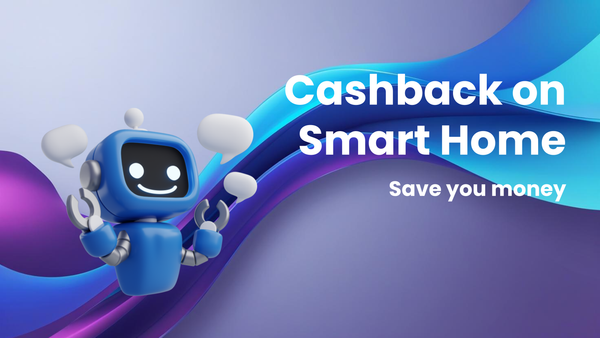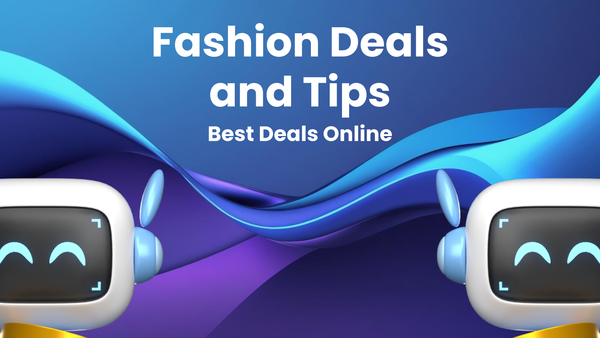Answers to Common Streaming Questions: Your How-To FAQ

Answers to Common Streaming Questions: Your How-To FAQ
Streaming has revolutionized the way we consume media. From movies and TV shows to music, podcasts, and even live events, streaming services have become ubiquitous in modern life. However, navigating the ever-expanding world of streaming can be confusing, especially for newcomers. This FAQ aims to answer your most pressing questions, providing a comprehensive guide to help you understand and optimize your streaming experience.
I. Getting Started: Basic Concepts and Equipment
1. What is streaming?
Streaming is the process of delivering audio or video content over the internet in real-time, without requiring you to download the entire file to your device first. Instead, your device receives a continuous stream of data, allowing you to watch or listen to the content almost instantly. Think of it like renting a movie instead of buying it. You access it for a period, but you don’t own the file.
2. What equipment do I need to stream?
The essential equipment for streaming includes:
- An internet connection: A stable and relatively fast internet connection is crucial for a smooth streaming experience. The required speed depends on the content you’re streaming (see question 4).
- A streaming device: This can be a Smart TV, a streaming stick (e.g., Roku, Amazon Fire TV Stick, Chromecast), a gaming console (e.g., PlayStation, Xbox), a computer, a tablet, or a smartphone.
- A subscription to a streaming service: Most streaming services operate on a subscription basis, requiring you to pay a monthly or annual fee for access to their content library.
3. What is the difference between different streaming devices?
Streaming devices vary in terms of:
- Operating system and interface: Each device has its own operating system (e.g., Roku OS, Fire OS, Android TV, tvOS) which dictates the user interface, app availability, and overall user experience.
- App availability: While most major streaming services are available on all popular devices, some niche services may only be available on specific platforms.
- Processing power and performance: Higher-end devices generally offer smoother performance, faster loading times, and better support for high-resolution content and advanced features.
- Features: Some devices offer advanced features like voice control, screen mirroring, gaming capabilities, and integration with smart home devices.
- Price: Streaming devices range in price from affordable sticks to premium boxes.
4. How fast does my internet need to be for streaming?
The required internet speed depends on the resolution and quality of the content you want to stream:
- Standard Definition (SD): At least 3 Mbps.
- High Definition (HD): At least 5 Mbps (720p) to 8 Mbps (1080p).
- Ultra High Definition (4K): At least 25 Mbps.
These are just minimum recommendations. For a truly seamless experience, especially with multiple devices connected to your network, you'll want a faster connection. Test your internet speed using online speed test tools like Speedtest.net.
5. What is bandwidth?
Bandwidth refers to the amount of data that can be transmitted over your internet connection in a given amount of time. Think of it like the size of a pipe – the wider the pipe (higher bandwidth), the more water (data) can flow through it at once. When multiple devices are streaming simultaneously, they are all competing for bandwidth.
II. Understanding Streaming Services: Subscriptions and Content
6. What are the different types of streaming services?
Streaming services can be categorized into several types:
- Subscription Video on Demand (SVOD): These services offer unlimited access to a library of content for a recurring subscription fee (e.g., Netflix, Disney+, Hulu, Amazon Prime Video).
- Ad-Supported Video on Demand (AVOD): These services offer free content, but viewers are required to watch advertisements (e.g., Tubi, Crackle, Pluto TV).
- Transactional Video on Demand (TVOD): These services allow you to rent or purchase individual movies or TV shows (e.g., Apple TV, Google Play Movies & TV, Amazon Prime Video – rentals/purchases).
- Live TV Streaming Services: These services offer live channels and on-demand content, often mimicking a traditional cable or satellite TV experience (e.g., Sling TV, YouTube TV, Hulu + Live TV).
- Music Streaming Services: These services offer access to a vast library of music for a subscription fee (e.g., Spotify, Apple Music, Amazon Music Unlimited).
- Gaming Streaming Services: These services allow you to play video games streamed directly to your device, without requiring you to download or install them (e.g., Xbox Cloud Gaming, PlayStation Plus Premium, Nvidia GeForce Now).
7. How do I choose the right streaming service for me?
Consider the following factors when choosing a streaming service:
- Content library: What kind of movies, TV shows, music, or other content do you enjoy watching or listening to? Check the catalogs of different services to see which ones offer the content you want.
- Price: How much are you willing to spend on streaming services each month? Compare the subscription fees of different services.
- Features: Do you need features like offline downloads, multiple user profiles, or 4K streaming?
- Compatibility: Is the service compatible with your streaming devices?
- Free trial: Take advantage of free trials to test out different services before committing to a subscription.
8. What is 4K streaming and do I need it?
4K streaming, also known as Ultra High Definition (UHD) streaming, offers significantly higher resolution than HD streaming. This results in a sharper, more detailed picture.
To enjoy 4K streaming, you need:
- A 4K-compatible TV: Your TV must support 4K resolution.
- A streaming device that supports 4K: Make sure your streaming device is capable of outputting 4K video.
- A streaming service that offers 4K content: Not all streaming services offer 4K content. Look for the 4K or UHD logo on titles.
- A fast internet connection: At least 25 Mbps is recommended.
Whether you need 4K streaming depends on your viewing habits and preferences. If you have a large 4K TV and enjoy watching visually stunning content, 4K streaming can significantly enhance your viewing experience. However, if you have a smaller TV or don't prioritize visual fidelity, HD streaming may be sufficient.
9. Can I share my streaming account with others?
Most streaming services allow you to create multiple user profiles on a single account. However, sharing your account with people outside your household may violate the terms of service and could lead to account suspension. Some services are actively cracking down on account sharing. Check the specific terms of service for each service you use.
10. How do I cancel my streaming subscription?
The cancellation process varies depending on the streaming service. Generally, you can cancel your subscription through your account settings on the service's website or app. Be sure to cancel before your next billing date to avoid being charged.
III. Troubleshooting Common Streaming Issues
11. Why is my streaming video buffering?
Buffering occurs when your device isn't receiving data fast enough to play the video smoothly. This can be caused by:
- Slow internet connection: The most common cause. Test your internet speed.
- Network congestion: Too many devices using your internet connection at the same time.
- Weak Wi-Fi signal: Move your streaming device closer to your router or consider using a wired Ethernet connection.
- Outdated streaming device or app: Make sure your device and apps are up to date.
- Server issues with the streaming service: Sometimes the problem is on the service's end.
12. How do I fix buffering issues?
Here are some troubleshooting steps:
- Check your internet speed: Run a speed test to ensure you have sufficient bandwidth.
- Restart your router and modem: This can often resolve temporary network issues.
- Move your streaming device closer to your router: Improve your Wi-Fi signal.
- Use a wired Ethernet connection: This provides a more stable and reliable connection.
- Close other apps and devices that are using your internet connection: Reduce network congestion.
- Lower the video quality: Select a lower resolution (e.g., 720p instead of 1080p) in the streaming service's settings.
- Update your streaming device and apps: Ensure you have the latest software and app versions.
- Clear the cache and data of the streaming app: This can resolve corrupted data issues.
- Contact your internet service provider (ISP): If the problem persists, there may be an issue with your internet service.
- Contact the streaming service's support: If the buffering seems specific to one service, they may be experiencing technical difficulties.
13. Why is my streaming video freezing or crashing?
Freezing and crashing can be caused by similar factors as buffering, as well as:
- Insufficient processing power: Your streaming device may not be powerful enough to handle the demands of the streaming app.
- Overheating: If your device is overheating, it may freeze or crash.
- Software bugs: Bugs in the streaming app or operating system can cause instability.
14. How do I fix freezing or crashing issues?
Try these troubleshooting steps:
- Restart your streaming device: This can often resolve temporary software glitches.
- Close other apps running in the background: Free up system resources.
- Ensure your device is properly ventilated: Prevent overheating.
- Update your streaming device and apps: Install the latest bug fixes and performance improvements.
- Reset your streaming device to factory settings: This should be a last resort, as it will erase all your data and settings.
- Consider upgrading to a more powerful streaming device: If your device is consistently struggling to stream content, it may be time for an upgrade.
15. Why am I not getting sound from my streaming device?
Sound issues can be caused by:
- Incorrect audio settings: Check the audio settings on your TV, streaming device, and within the streaming app.
- Muted volume: Ensure the volume is turned up on all devices.
- Faulty cables: If you are using external speakers or headphones, check the cables for damage.
- Outdated drivers: If you are streaming from a computer, make sure your audio drivers are up to date.
16. How do I fix sound issues?
Try these solutions:
- Check the volume on your TV, streaming device, and within the streaming app.
- Make sure the correct audio output device is selected.
- Check the audio settings on your TV and streaming device. Ensure the audio format (e.g., Dolby Digital, Stereo) is compatible with your equipment.
- Restart your TV and streaming device.
- Try a different HDMI cable or audio cable.
- Update your audio drivers (if streaming from a computer).
- Reset your TV to factory settings.
IV. Advanced Streaming Tips and Tricks
17. What is a VPN and should I use one for streaming?
A VPN (Virtual Private Network) encrypts your internet traffic and routes it through a server in a different location. This can be used to:
- Access geographically restricted content: Some streaming services offer different content libraries in different countries. A VPN can make it appear as if you are located in another country, allowing you to access that content.
- Protect your privacy: A VPN can hide your IP address and prevent your ISP from tracking your online activity.
- Bypass throttling: Some ISPs may throttle your internet speed when you are streaming. A VPN can help to bypass this throttling.
However, using a VPN for streaming may violate the terms of service of some streaming services. Furthermore, some streaming services actively block VPN usage. Choose a reputable VPN provider that offers fast speeds and reliable connections.
18. What are some tips for managing my streaming budget?
- Take advantage of free trials: Test out different services before subscribing.
- Rotate subscriptions: Subscribe to one service for a month or two, then switch to another.
- Bundle subscriptions: Some services offer bundles that can save you money.
- Cancel unused subscriptions: Regularly review your subscriptions and cancel any that you are not using.
- Consider ad-supported options: If you don't mind watching ads, consider subscribing to ad-supported versions of streaming services.
- Share accounts (responsibly): If allowed by the service, share accounts with family or friends (while adhering to the terms of service).
19. How can I improve my Wi-Fi signal for streaming?
- Position your router in a central location: This will help to distribute the Wi-Fi signal evenly throughout your home.
- Keep your router away from obstructions: Walls, metal objects, and other electronic devices can interfere with the Wi-Fi signal.
- Upgrade your router: If you have an old router, consider upgrading to a newer model with better performance.
- Use a Wi-Fi extender or mesh network: These devices can extend the range of your Wi-Fi signal.
- Change your Wi-Fi channel: Use a Wi-Fi analyzer app to find the least congested channel.
- Use a 5 GHz Wi-Fi network: The 5 GHz band offers faster speeds and less interference than the 2.4 GHz band, but it has a shorter range.
20. Where can I find reviews and recommendations for streaming services?
Many websites and publications offer reviews and recommendations for streaming services, including:
- Tech websites: The Verge, CNET, TechRadar, Wired.
- Consumer reports websites: Consumer Reports.
- Streaming-specific websites: JustWatch, Reelgood.
- Online forums and communities: Reddit, AVS Forum.
By understanding the fundamentals of streaming, choosing the right services and equipment, troubleshooting common issues, and employing advanced tips and tricks, you can unlock a world of entertainment and enjoy a seamless and fulfilling streaming experience. This FAQ provides a solid foundation, but remember that the streaming landscape is constantly evolving. Stay informed, experiment, and personalize your setup to create the perfect streaming experience for you.




